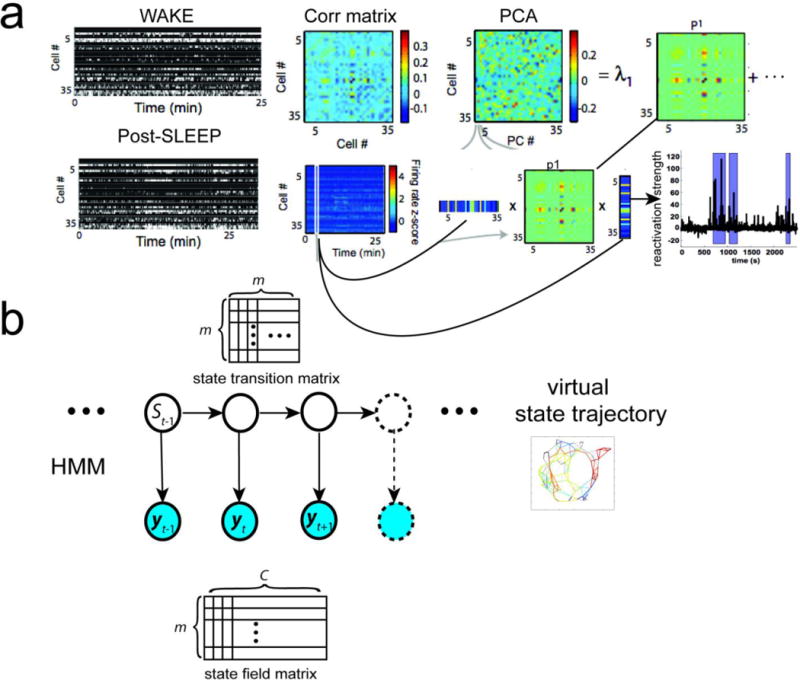Box 2 FIGURE I. Unbiased Assessment of Sleep-Associated Neuronal Population Codes.

(a) Principal component analysis (PCA) for computing the similarity of two templates of correlation matrices from population spike counts (WAKE and SLEEP) and assessing the reactivation strength during sleep (reproduced with permission, [43]). In WAKE, {λ,1,p1} are associated with the dominant principal component (PC) extracted from PCA. In SLEEP, time-varying reactivation strength is computed. (b) Unsupervised population decoding using a finite-state hidden Markov model (HMM). Specifically, the spatial environment is represented by a finite discrete state space. Trajectories across spatial locations (“states”) are associated with consistent hippocampal ensemble spike patterns, which are characterized by a state transition matrix. From the state transition matrix, a topology graph that defines the connectivity in the state space is inferred [69]. In these two methods, no assumption is made about neuronal RF, and the bin size in Post-SLEEP is independent on the bin size used in WAKE. Since the order of WAKE and SLEEP can be switched, and one can apply these methods to SLEEP data first and then examine their meanings in the WAKE behavior; therefore they both fall into the new paradigm (“memory first, meaning later”).
